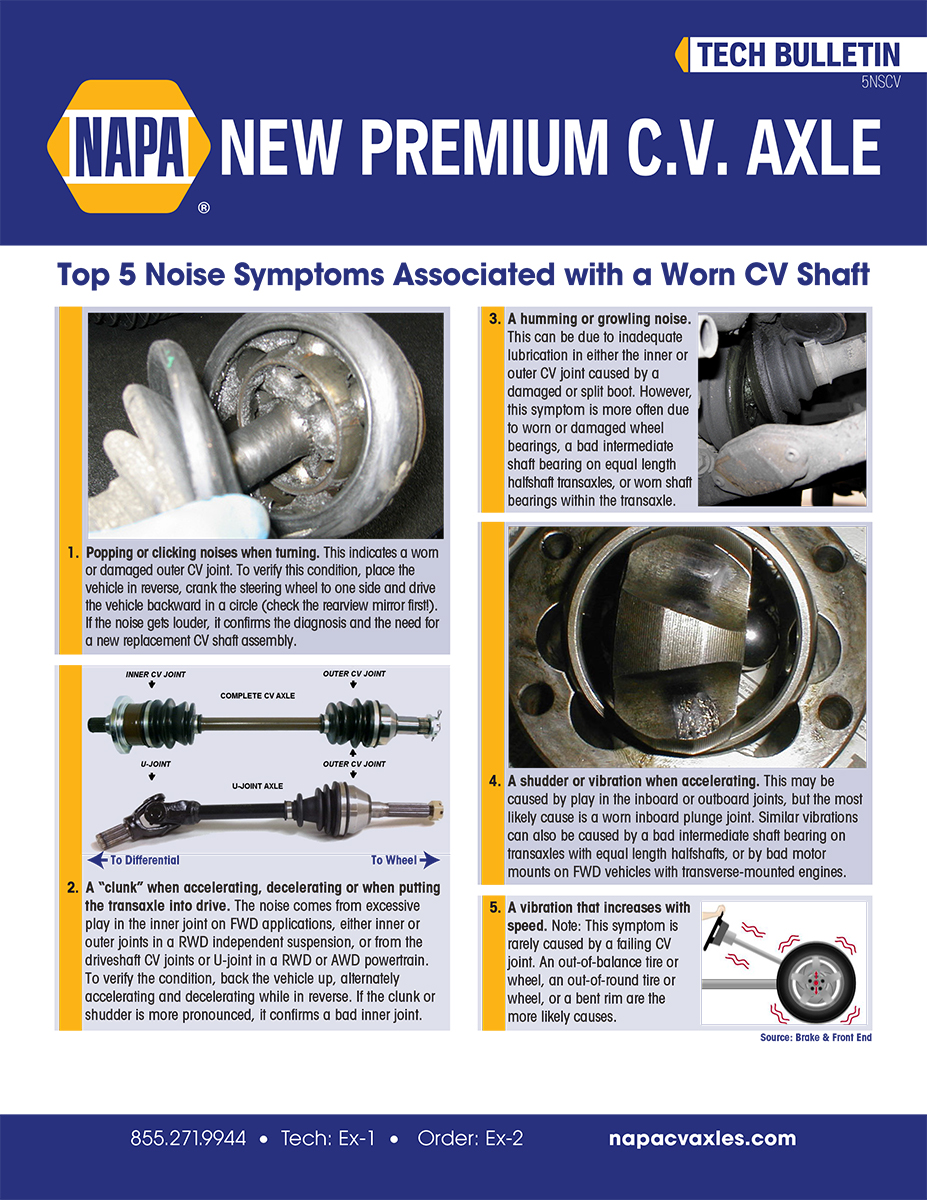Top 5 Noise Symptoms Associated with a Worn CV Shaft

1. Popping or clicking noises when turning.
This indicates a worn or damaged outer CV joint. To verify this condition, place the vehicle in reverse, crank the steering wheel to one side and drive the vehicle backward in a circle (check the rearview mirror first!). If the noise gets louder, it confirms the diagnosis and the need for a new replacement CV shaft assembly.
2. A “clunk” when accelerating, decelerating or when putting the transaxle into drive.
The noise comes from excessive play in the inner joint on FWD applications, either inner or outer joints in a RWD independent suspension, or from the driveshaft CV joints or U-joint in a RWD or AWD powertrain. To verify the condition, back the vehicle up, alternately accelerating and decelerating while in reverse. If the clunk or shudder is more pronounced, it confirms a bad inner joint.
3. A humming or growling noise.
This can be due to inadequate lubrication in either the inner or outer CV joint caused by a damaged or split boot. However, this symptom is more often due to worn or damaged wheel bearings, a bad intermediate shaft bearing on equal length halfshaft transaxles, or worn shaft bearings within the transaxle.
4. A shudder or vibration when accelerating.
This may be caused by play in the inboard or outboard joints, but the most likely cause is a worn inboard plunge joint. Similar vibrations can also be caused by a bad intermediate shaft bearing on transaxles with equal length halfshafts, or by bad motor mounts on FWD vehicles with transverse-mounted engines.
5. A vibration that increases with speed.
Note: This symptom is rarely caused by a failing CV joint. An out-of-balance tire or wheel, an out-of-round tire or wheel, or a bent rim are the more likely causes.

